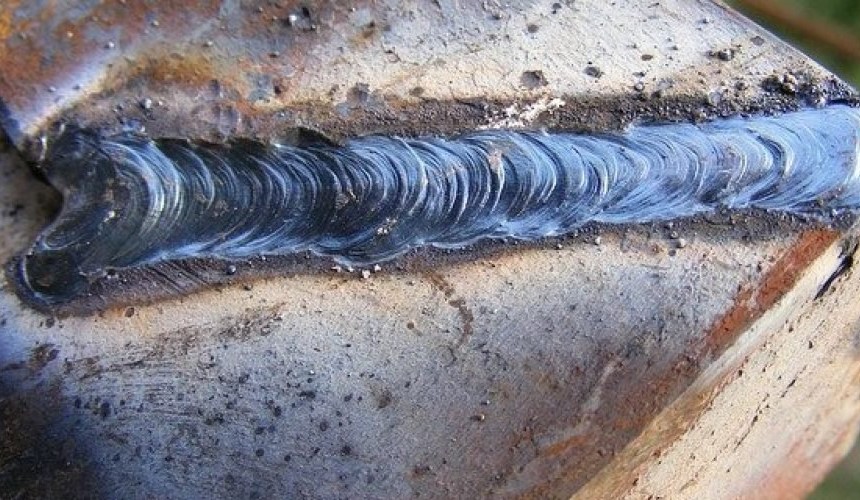Exactly How to Avoid Weld Undercut: Necessary Tips for Welders
Exactly How to Avoid Weld Undercut: Necessary Tips for Welders
Blog Article
Mastering the Art of Welding: Exactly How to Stay Clear Of Undercut Welding Issues for Flawless Construction Outcomes
Effectiveness and precision are vital in the world of welding, where even the least imperfection can endanger the structural stability of a made piece. One typical obstacle that welders face is undercutting, a flaw that can weaken a weld joint and lead to pricey rework. By understanding the source of undercut welding and executing efficient strategies to avoid it, welders can boost their craft to new levels of quality (Preventing weld undercut). In the quest of perfect construction results, understanding the art of welding to stay clear of undercut problems is not just a skill yet a need for those making every effort for perfection in their work.
Recognizing Undercut Welding

To stop undercut welding, welders should make sure proper welding parameters, such as readjusting the present, voltage, traveling speed, and preserving the proper electrode angle. Additionally, utilizing the appropriate welding method for the details joint configuration is necessary. Utilizing weaving activities or backstepping methods can assist ensure proper weld metal deposition and decrease the chance of undercut formation. Regular assessment of welds throughout and after the welding procedure is likewise vital to capture any undercut early and make needed adjustments to avoid more issues. Preventing weld undercut. By understanding the reasons for undercut welding and implementing preventive procedures, welders can attain high-quality, structurally sound welds.
Reasons of Undercut in Welding
Comprehending the variables that add to undercut in welding is essential for welders to produce premium, structurally audio welds. Undercutting occurs when the weld metal does not properly load the groove created between the base steel and the formerly deposited weld metal. Several variables can bring about damage in welding. One common cause is extreme heat input. Welding at heats for extensive periods can result in the base metal thawing greater than desired, leading to damage. Insufficient welding existing or wrong welding rate can also add to damage. Not enough current may not provide sufficient heat to thaw the base and filler steels appropriately, while extreme speed can stop appropriate blend, triggering undercut. Additionally, inappropriate electrode angles or incorrect lantern adjustment methods can develop areas of reduced weld metal deposition, advertising undercut. Recognizing these reasons and implementing appropriate welding techniques can assist prevent undercutting concerns, making sure solid and resilient welds.
Strategies to Prevent Undercutting

To minimize the risk of undercutting in welding, welders can employ calculated welding strategies intended at boosting the quality and integrity of the weld joints. One efficient technique is to change the welding parameters, such as voltage, current, and travel speed, to guarantee appropriate warm input and deposition. Preserving an ideal electrode angle and making certain regular traveling rate can additionally aid stop undercut. In addition, making use of the proper welding strategy for the certain joint arrangement, such as weave or stringer grains, can add to minimizing undercutting. Preventing weld undercut.
Additionally, proper joint prep work, consisting of making sure clean base products without pollutants and using the ideal welding consumables, is crucial in protecting against undercut issues. Utilizing back-step welding techniques and regulating the weld bead account can likewise help disperse warm equally and lessen the risk of undercut. Normal assessment of the weld joint during and after welding, along with carrying out quality guarantee steps, can assist in resolving and discovering undercutting problems promptly. By executing these strategies faithfully, welders can achieve perfect fabrication results with minimal undercut defects.
Value of Appropriate Welding Parameters
Selecting and maintaining proper welding specifications is necessary for achieving effective welds with minimal issues. Welding criteria refer to variables such as voltage, existing, take a trip speed, electrode angle, and protecting gas flow price that directly impact the welding click now procedure. These specifications must be carefully adjusted based upon the kind of product being welded, its density, why not try here and the welding method employed.
Correct welding parameters make sure the correct amount of heat is put on thaw the base steels and filler product uniformly. If the specifications are established expensive, it can lead to excessive warm input, triggering spatter, distortion, or burn-through. On the various other hand, if the specifications are as well reduced, incomplete blend, lack of infiltration, or damaging may happen.
Quality Guarantee in Welding Procedures

Conclusion
To conclude, mastering the art of welding needs an extensive understanding of undercut welding, its causes, and methods to avoid it. By ensuring proper welding criteria and executing quality control techniques, remarkable fabrication results can be achieved. It is essential for welders to regularly pursue quality in their welding procedures to prevent undercut issues and create premium welds.
Undercut welding, a typical flaw in welding processes, takes place when the weld metal doesn't appropriately fill the groove and leaves a groove or anxiety along the bonded joint.To avoid undercut welding, welders must ensure correct welding parameters, such as readjusting the existing, voltage, traveling rate, and preserving the proper electrode angle. Insufficient welding incorrect or existing welding speed can also contribute to undercut.To minimize the danger of undercutting in welding, welders can employ strategic welding techniques intended at enhancing the quality and integrity of the weld joints.In final thought, understanding the art of welding requires a comprehensive understanding of undercut welding, its causes, and strategies to avoid it.
Report this page